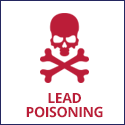December 23
“Next year in Jerusalem,” Jews throughout the ages have declared
at the end of the seder meal.
In June of last year, my older brother Stewart told me that he
and his wife Bonnie would be going to Israel this December – his first
trip, her second. My immediate response: “I’m joining you.” My 14th.
“Next year (and six months) in Jerusalem” was today.
Our group from Baltimore, the ASSOCIATED Family mission, reached
Mt. Scopus mid-afternoon.
Rachel and Elliot, my twin niece and nephew, have joined us. The
bright sun made the Old City of Jerusalem hazy, not the best for
recreating the photo I took of the two of them from this spot 13 years
ago, shortly after their Bnai Mitzvah.
Shortly before we said the Shehecheyanu, the prayer for such
special occasions, a member of our group read this excerpt from a
Yiddish poet:
“One does not travel to Jerusalem. One returns.”
I will recite that line every time I return.








